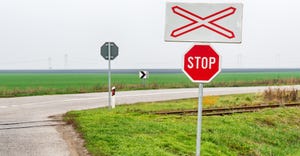Waste Industry Works to Drive Down Injury and Illness Rates: Part Two
Collaboration is key when it comes to progressing safety initiatives throughout the waste and recycling industry. Three leading associations came together at WASTECON 2022 in San Diego to discuss cross-functional, proactive best practices and to provide insight into the state of safety.
Collaboration is key when it comes to progressing safety initiatives throughout the waste and recycling industry.
Three leading associations came together at WASTECON 2022 in San Diego to share cross-functional, proactive best practices and to provide insight into the state of safety.
Shawn Mandel, vice president Safety and Risk Management Waste Connections, told the audience that the safety and protection of workers, members of the industry and the communities served is paramount to the waste and recycling industry, as evidenced by the joint efforts of industry associations.
"They set all that aside and realize that there's a bigger picture here," Mandel said. "All three of them mentioned that our objective is to get us off that top 10 list and to continue to drive world-class safety within the organization."
An array of resources are available for employers and companies wishing to revamp or adjust their safety programs.
Jesse Maxwell, advocacy and safety senior manager, Solid Waste Association of North America (SWANA) said that people are the most important resources. SWANA's chapter safety ambassador program identifies two individuals within a chapter to be a go-to on safety-related issue.
"They might not have all the answers to everything because it's hard for any one person to, but they're willing to make sure that there are safety-related events going on at the chapter level," he said.
In addition, the chapter safety ambassador reports chapter members of fatalities and reach out to affected municipalities and companies.
Maxwell also mention SWANA's safety committee, which organizes the annual Safety Summit.
Jerry Sjogren, senior director of safety, the Institute of Scrap Recycling Industries (ISRI), explained how the association's safety outreach is one of its strongest assets. ISRI's safety team was created to visit members' workplaces and create safety blueprints via meetings with C-suite management and data gathering.
"We look at all the data - the IoT data, the OSHA data and insurance data - and we talk about commitment and look at where they're at. We actually walk around their facility try to come up with ideas and things to improve safety within their facilities," he explained.
ISRI also has a series of Recycling Industry Operating Standard reels and three-minute training videos.
"We know that sometimes, even for the smaller operations, it's hard to keep up with training and bring on new people." Sjogren said. "We're covering things like machine lockout tagout, protection from extreme temperatures. As of 2023, we will have prescribed programs that our people can log on for a small fee or discounted rate to train people through a learning model and learning management system."
Kirk Sander, chief of staff and vice president of safety and standards, National Waste and Recycling Association (NWRA), mentioned the organization's Safety Monday newsletter, which covers a different topic each week.
The organization's ANS Z245 standards are "national industry standards for waste and recycling equipment, facilities and operations.
"OSHA will use the Z245 standard in a general duty clause citation, if there's not us specific citation or a specific regulation for the industry," he stated.
Sander's participation in a new OSHA advisory subcommittee for a heat standard brings waste and recycling industry representation to the forefront of the agency.
"They formed a subcommittee that has multiple industries represented - everything from farm workers to the US Army to waste and recycling," he aid. "I sit on that committee as a representative. We've had a lot of really good discussions."
The Educational Research and Education Foundation (EREF) and the NWRA also have partnered on analyzing historical data to identify industry holes in safety.
"They have an RFP out right now for a 10-year look back on safety data," Sander said. "What my gut is telling me as the first round of that is going to be where the holes are, what data do we need from all of you to make this better."
Editor's Note: This is part two in a two-part series covering safety and compliance in the waste and recycling industry. Part one provides a general update on the state of OSHA. Part two dives into association resources.
About the Author
You May Also Like




